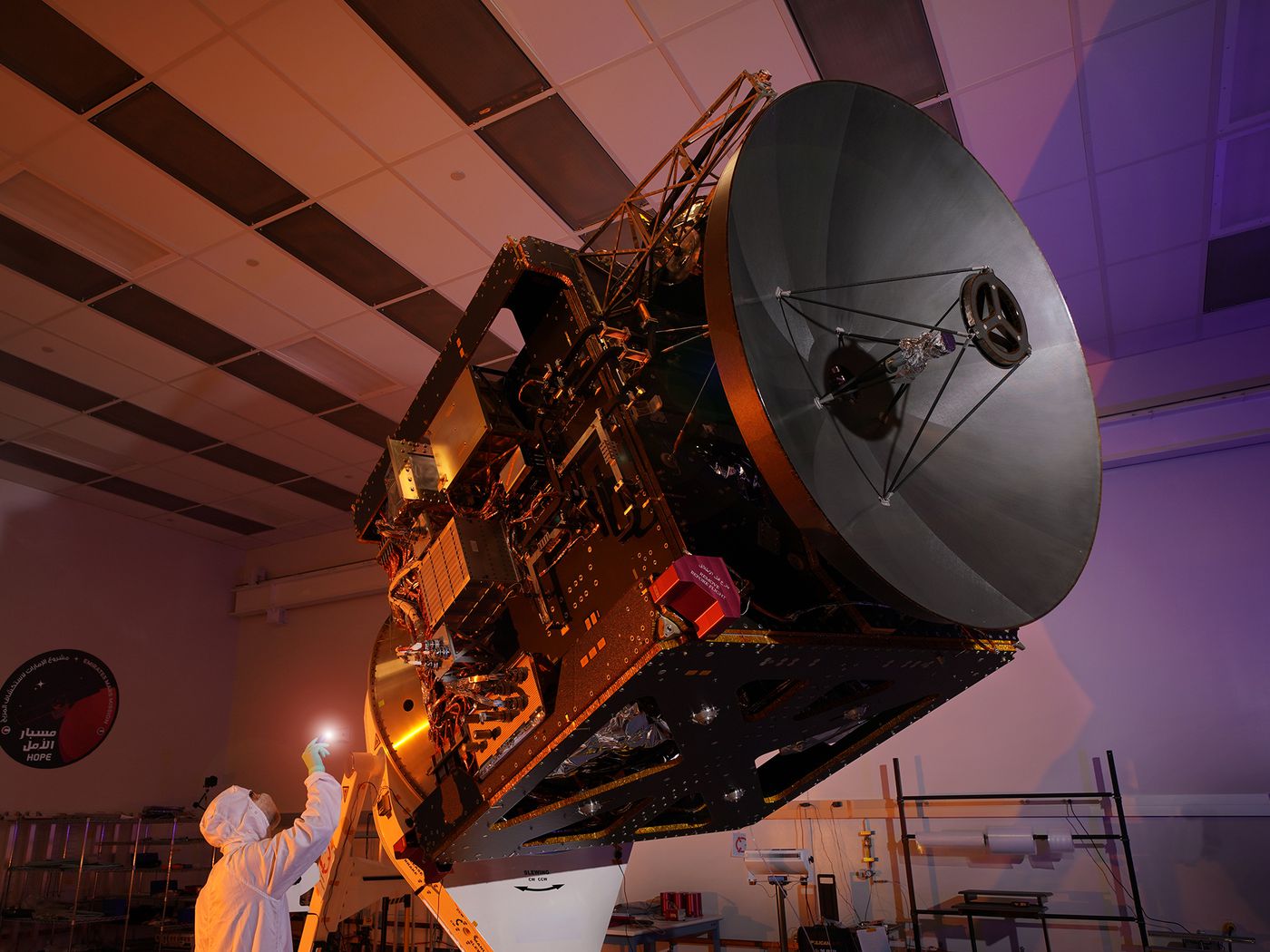The first Arab space mission by the United Arab Emirates to Mars, an unmanned space probe named ‘Hope’, is on its way. Hope was launched after a successful lift-off from the Tanegashima Space Centre in southern Japan. The Japanese rocket carrying the probe made by the UAE launches mars mission lifted off after two previous attempts had been called off due to adverse weather conditions.
A live feed of the probe called “Al-Amal” in Arabic showed people applauding in the Japanese control room once the probe was detached successfully. The mission ‘Hope’ set to Mars is expected to reach in February 2021, coinciding with the 50th anniversary of UAE’s formation.
Sarah Al Amiri, the science head of the mission, spoke about the successful launch. She stated that the impact of the launch on her country will be the same as the impact of Apollo 11’s moon landing on America 51 years ago on the same date: July 20.
“This mission is an important milestone for the UAE launches mars mission and the region,” said Yousuf Hamad AlShaibani. It has already inspired millions of youth regionally to dream big and work hard to achieve what seems impossible,” said director of the UAE’s Mohammed bin Rashid Space Centre, at a post-launch press conference in Japan.
According to Nasa, Mars’ distance from the earth will be short by 62.07 million kilometers, countries are trying to use this as an advantage.
UAE and Mars
UAE doesn’t have experience in space designing and manufacturing like India, the US, Russia, or China, yet it has successfully launched a space probe. For the mission, UAE engineers (trained by American experts) managed to develop the probe in just six years.
The launch probe by UAE will not land on the surface of Mars, instead it will orbit around the planet for one Martian year of 687 days. The mission aims to provide a comprehensive image of the planet’s atmosphere in one Martian year.
Scientists expect the mission to help in developing human understanding about how Mars lost much of its air and a great amount of water. The probe is also seen as a vehicle for inspiration to attract young people from UAE and Arab states to take up science.
The probe is part of a bigger goal — building a human settlement on the Red planet within the next 100 years. The country also plans to reduce its dependence on oil and gas and build a knowledge-based economy in the future.
How the UAE Pulled it Off
The UAE government told the team not to buy a spacecraft from any developed space nations like the US. But design and build the satellite itself.
The concerned department partnered with American universities that have prior experience. Scientists from the Emirates and the United States worked together to design and build the spacecraft and three onboard instruments to study Mars.
Most part of the spacecraft was built at the Laboratory for Atmospheric and Space Physics (LASP) at the University of Colorado, Boulder. Significant work happened at the Mohammed Bin Rashid Space Centre (MBRSC) in Dubai.
The Hope Spacecraft
The spacecraft is carrying three instruments designed by both the US and Emirate scientists: an infrared spectrometer, an ultraviolet spectrometer, and a camera. The spacecraft will be placed at the high orbit- varying from 12,400 miles to 27,000 miles from the surface of the red planet.
The Hope spacecraft, using its camera, will give scientists a complete view of Martian weather throughout the day. Scientists will investigate how dust storms and other weather conditions near the Mars surface speed up or slow the loss of planet’s weather into space.
Message of Pride
The UAE’s government took to Twitter to announce the probe success, “message of pride, hope, and peace to the Arab region, in which we renew the golden age of Arab and Islamic discoveries.”
The race to Mars became famous after the confirmation of water on the planet 10years ago.
Space probes to the red planet have set off since 1960s, of which many have never reached the planet and some failed to land.
“What is unique about this mission is that for the first time the scientific community around the world will have a holistic view of the Martian atmosphere at different times of the day at different seasons,” said Omran Sharaf, the mission’s project manager during a pre-launch event.

